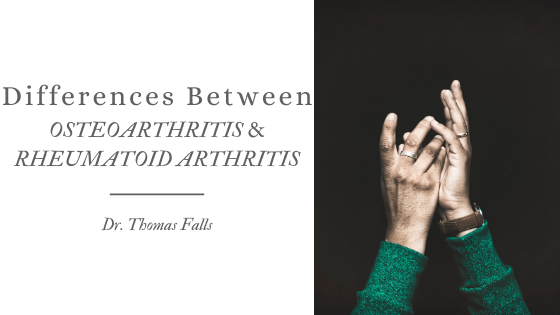Individuals with any form of arthritis typically endure similar symptoms; from a limited range of motion to daily battles with pain, arthritis is a debilitating condition that results in a lower quality of life. Both conditions cause joint inflammation. However, between osteoarthritis and rheumatoid arthritis, there are key differences that alter diagnosis and treatment, and it is important that individuals looking for pain management options understand how and why these conditions are distinct.
Osteoarthritis
The development of osteoarthritis occurs over time as protective cartilage in the joints wears down, causing the bones to collide with one another. Generally, osteoarthritis occurs due to repetitive motion putting pressure on the joints, and this condition is common in athletes. Osteoarthritis can occur in any joint, but it is most common in the hands and knees. Individuals with osteoarthritis may also develop bone spurs or other painful abnormalities in tandem with their condition.
Rheumatoid Arthritis
Unlike osteoarthritis, rheumatoid arthritis occurs due to an autoimmune disease that causes the body’s immune system to attack joint tissue. The result is the same: bones rubbing against bones to cause inflammation and pain. Rheumatoid arthritis, like osteoarthritis, can occur in any joint, but it most commonly occurs in the hands, hips, feet, knees, and fingers; while osteoarthritis typically only affects one side of the body, rheumatoid arthritis often affects both sides, meaning that if one hand is affected, the other hand likely will be, as well.
Another unique characteristic of rheumatoid arthritis is that individuals with this condition also suffer from certain systemic symptoms, which are symptoms that affect the entire body. These can include weight loss, fatigue, inflammation in the eyes or lungs, and rheumatoid nodules.
Similarities
As stated previously, both forms of arthritis cause inflammation of the joints, and as such, diagnostics and treatment methods often overlap. In order to diagnose either kind of arthritis, a physical evaluation is required to assess the severity and extent of the condition. The prescription of NSAIDs, which reduce inflammation, is common for both conditions, as is physical therapy. Both kinds of arthritis are considered to be chronic conditions, meaning that there is no cure.

